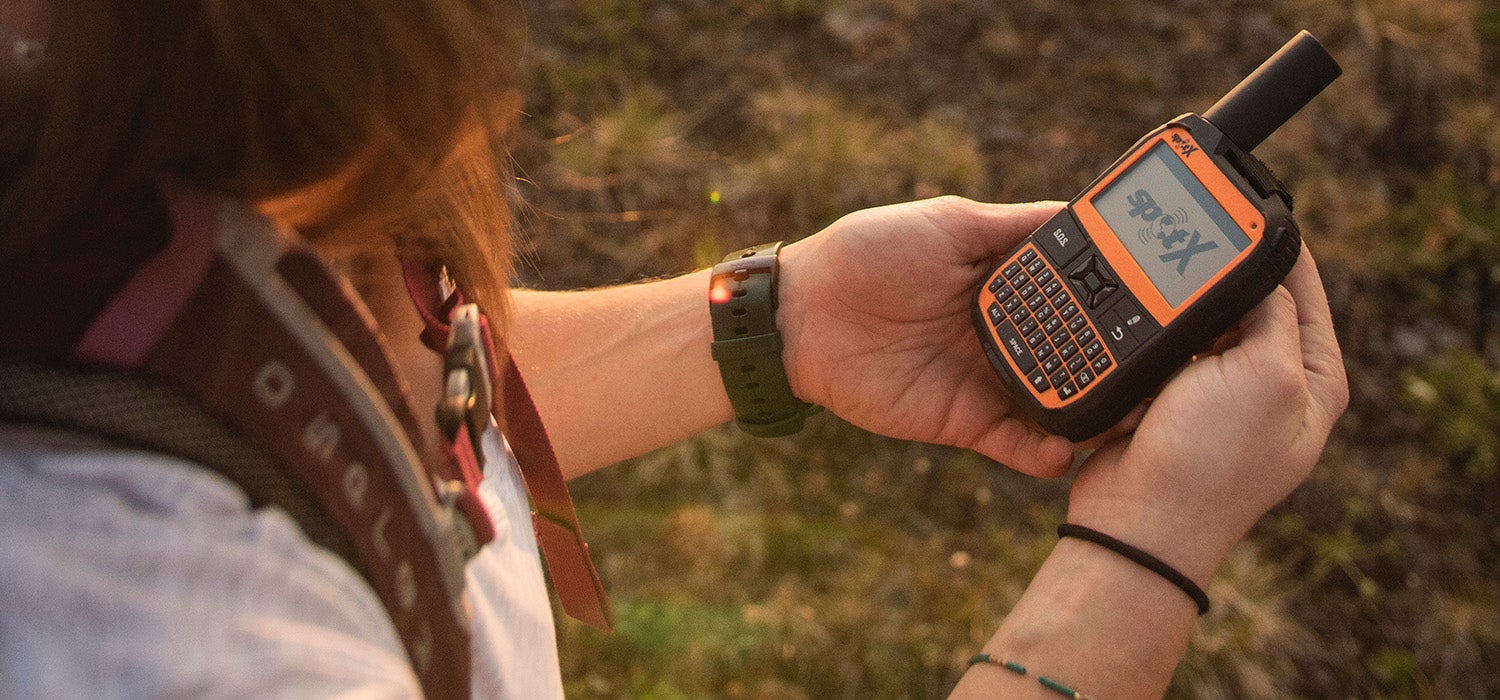How a Satellite Messenger Device Can Save Your Life

When Ian Scott and two friends set out for a two-night backpacking trip in the Canadian Rockies, they didn’t expect to be airlifted off the trail. They knew the area, they were prepared with enough supplies to spend an extra night in the mountains if needed, and they had a handheld GPS with fresh batteries to ensure they didn’t lose their way.
But on the second day of their trip, a heavy snowstorm forced them to retreat back to the first night’s campsite to wait out the storm. Poor visibility and snow-covered tracks from other hikers made it difficult to find their way, and the cold zapped the batteries in the GPS, rendering it useless.
By their third morning, the snow was knee-deep. They attempted to go back another way, but the chains required for descending a steep portion of that trail were buried in the snow and it wasn’t a viable route. Their only remaining options were to wait it out, in grizzly country, and hope for the best, or to send an S.O.S. from Scott’s SPOT Gen3 device.
At 4:30 a.m. after their second night, Scott hit the S.O.S. button, sending their exact location to a search and rescue team. Later, they climbed to find a weak cell signal, and the crew was able to call the SAR team to let them know they were OK and had plenty of supplies. By 2 p.m. that afternoon, a helicopter found them, and lifted them to safety.
If they hadn’t been able to call for help from their SPOT device, the group may have been forced to wait it out among the wildlife until their families realized something was wrong and called for help on their behalf.
Even the best-prepared groups, like Scott’s, sometimes find themselves in the worst of situations. And if it ever happens to you, you don’t want to be wishing you had a satellite messenger with you—you want to have it in hand, ready to go.
Since Scott’s rescue with the SPOT Gen3, technology has advanced even more and the NEW SPOT X device now has 2-way messaging. So, you can not only send for help, but you can receive messages to make sure communication is clear.
Here are just a few ways a 2-way satellite messenger like the SPOT X can come in handy on your next backcountry expedition.
1. Ease your worries (and your family’s) If you have a satellite messenger and never need to use it, consider that a success. But it’s easier not to think about it when you already have it, when it’s giving you peace of mind in the background because you don’t have to worry about the “what ifs” around calling for help. Rest easy knowing that a call for help is just an S.O.S. button away should you ever need it.
2. Keep in touch with your family SPOT plans allow you to Check In with your family and friends as little or as often as you’d like, sending both pre-programmed messages and texting back and forth with phone numbers and email addresses anywhere in the world. If you’re embarking on a long trail and want to stay in touch with a broader audience, you can even post social updates from your SPOT device, letting folks know about trail conditions, the first bear you spotted, and what your new trail name is.
3. Call for help with one button When the worst-case scenario happens and you can’t make it off the trail on your own, SPOT’s S.O.S. button calls for help on your behalf. With the SPOT X, you’ll be able to communicate directly with search and rescue teams about your location, condition, and the team’s progress in finding you.
4. Let your loved ones follow along on your trip SPOT devices allow you to enable tracking to share your location in near real-time with friends and family who want to track your progress. Your location will be shared via Google Maps, password-protected and updated every 2.5 to 60 minutes, so you can sleep easy knowing someone always knows where you are.
